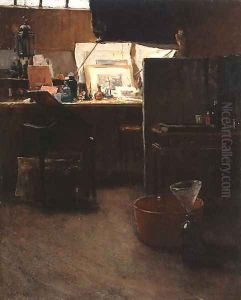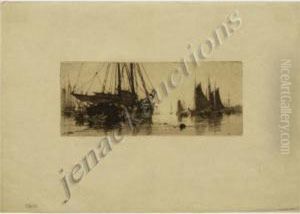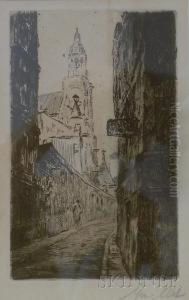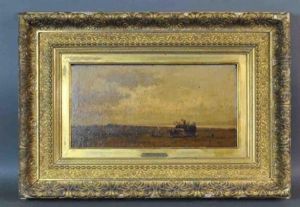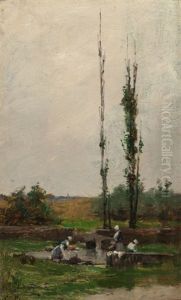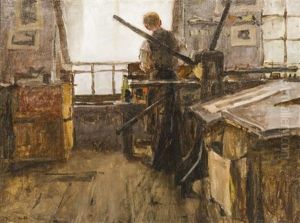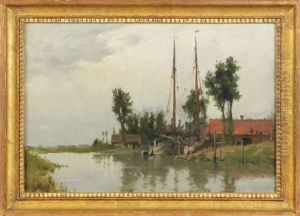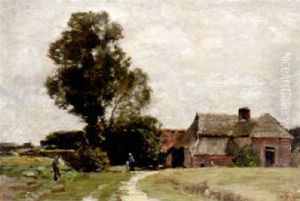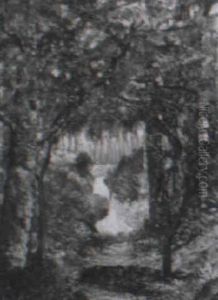Charles Adams Platt Paintings
Charles Adams Platt was an American architect, landscape architect, and artist, known for his involvement in the American Renaissance movement. Born on October 16, 1861, in New York City, Platt came from a well-established family which provided him with the support to pursue a career in the arts. He initially trained as an artist and became an accomplished etcher and painter, studying at the National Academy of Design in New York and later in Paris at the Académie Julian.
In his early career, Platt made a name for himself as a landscape painter and etcher, exhibiting his works at various galleries and institutions. However, his artistic focus shifted after a trip to Italy in 1892, where he developed a deep appreciation for the Italian villa and its integration of architecture, gardens, and water features. This experience profoundly influenced his future work and led him to transition from painting to architecture and landscape design.
Platt's architectural style blended classical elements with the American spirit, contributing to the American Renaissance movement. He designed numerous country estates, urban houses, and institutional buildings, which were characterized by their harmonious relationship with the surrounding landscape. His approach to integrating buildings with their gardens and terraces was innovative and became a hallmark of his design philosophy.
One of his most notable works is the Freer Gallery of Art in Washington, D.C., which showcases his ability to adapt classical principles to modern building requirements. Platt was also involved in city planning and was a proponent of the City Beautiful movement, which aimed to introduce beautification and monumental grandeur in cities.
Charles Adams Platt's contributions to architecture and landscape design were significant, and his impact on American architecture was profound. He played a crucial role in the development of country house architecture in the United States, and many of his works are still admired today for their elegance and timeless quality. Platt passed away on September 12, 1933, leaving behind a legacy of architectural and artistic works that continue to be studied and appreciated.
